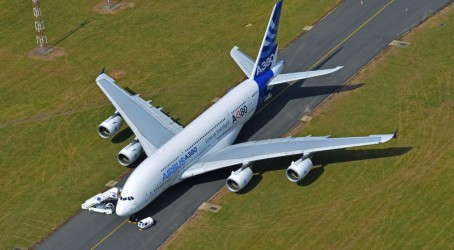Articles
As a native of the US, what drew you to a career in engineering in Britain?
I’ve been living in the UK for 15 years, but did my bachelor’s degree in electrical and computer engineering at the University of Wisconsin. Following my degree, I found a job designing automotive electronics and engine controllers for diesel engines for Motorola in Chicago.
I moved to the UK to work on a similar project, and, when Motorola decided to move the work we were doing to Munich, my wife and I looked at the option of moving to Germany but we decided we liked working here. I had the option to try something a little different, and I’d always been interested in aircraft, and I settled on the job I have now.
We were part of TRW in those days, and I joined in 2002. Since then, TRW was bought by Goodrich – and now we’re part of Safran, as a division. We’re Safran Power UK.
It can be nerve-wracking for people working at any company that’s taken over by another. Do you think Safran Power is a good fit for you?
Safran is a very good fit for us. Safran Corporation is interested in moving into the electric aircraft sector in a big way and we’re a perfect partner for them, because we’ve got the expertise in electrical power generation and distribution systems. It’s based on mature technology, but also innovative.
We brought the first variable frequency electrical power system to an airliner, so we have a lot of expertise in that area and generator power ratings from very small to very large. It brings the weight of the whole aircraft down, but it brings control challenges. In some cases if there is a short-circuit, you need to be able to react in a few hundredths of a microsecond.
The general trend in civil aircraft seems to be towards more electrification of systems...
Yes, absolutely – and that will continue to happen. Over the next decade we’re going to see hydraulic and pneumatic systems replaced by electric systems because of the weight-saving and reliability improvements, and safety as well. There’s a lot of reasons why things are going that way and we’re very well-positioned to help move that forward and be a part of the market.
What has been the highlight of your career to date?
It’s been possible to contribute to some of the design work on the A380 electrical power generation system. The A380 has been the most impressive aircraft that I’ve had the privilege to work on. It’s very large, and when you see one moving around at an airport it really is impressive: it’s great knowing that some of my designs are in there.

How big is your engineering team at Safran?
We’ve created a chief engineer’s office, and I’m the chief engineer for electronics. Until a few months ago I was the engineering manager for electronics, and in that context I was leading about 80 people divided into different teams for hardware, software, test and electromagnetic compatibility. Now I have a smaller team but I’m more technically focused on the actual design and the design processes. It’s an opportunity to be closer to the designs in a slightly better way than when leading a very large team.
Are you a member of a learned institution?
Yes, and I read all the journals and do a lot of reading on the internet. And go to seminars and training. I also learn a lot from my other colleagues in the chief engineers’ roles here.
What are your ambitions for the future?
I think I will stay in aerospace. I’m always looking for the next challenge – but the main thing is to keep learning. I think any job can become dull if you’re doing the same thing day after day after day. So I always try and see it from another perspective. At the moment I’m focused on this role but in the future I will try to do something that builds on everything I’ve learnt.